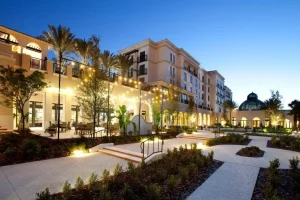Let’s be honest. For years, the standard hotel experience was designed to be a bubble. A predictable, comfortable, and frankly, sterile bubble. You got the same chain restaurant, the same generic art, the same mint on the pillow whether you were in Marrakech or Montreal. It was safe. But it was also… a little soulless.
Well, travelers are craving more now. We’re not just ticking landmarks off a list anymore. We want to feel a place. We want to smell the local markets, hear the neighborhood gossip, and taste a recipe that’s been passed down for generations. And believe it or not, your hotel—if you choose the right one—can be the very key that unlocks that authentic, local cultural immersion.
It’s More Than a Place to Sleep: The Rise of the Culturally-Curated Hotel
Think of it this way: a traditional hotel is like a fast-food burger. It satisfies a basic need, reliably. But a hotel focused on local cultural immersion is like a meal at a family-run trattoria where the nonna is cooking from a handwritten recipe book. Every detail is intentional, every flavor tells a story.
This shift is a direct response to a modern travel pain point: the feeling of being a spectator. We’re tired of just looking at culture through a bus window. We want to step inside the frame. And a new wave of hotels, from boutique family-run inns to larger properties with a hyperlocal focus, are making that possible.
How to Spot a Hotel That Offers Authentic Cultural Experiences
So, how do you find these places? It’s not always about the star rating. In fact, sometimes the fewer stars, the better the story. Here’s what to look for.
The Architecture and Design Tell a Local Story
Forget the mirrored ceilings and mass-produced furniture. A culturally-immersive hotel uses local materials. We’re talking reclaimed wood, regional stone, traditional textiles. The art on the walls isn’t from a warehouse; it’s from a painter who lives down the street. The design doesn’t just house you; it teaches you about the environment and history of the place.
The Staff as Cultural Ambassadors
This is a big one. When the concierge can tell you about the tiny, hidden tapas bar their uncle runs, rather than just the five-star restaurant that pays a commission, you’ve hit gold. Look for hotels that hire locally and empower their staff to share their personal favorites. Their passion is infectious—and it’s your best insider guide.
Food as a Time Machine
A hotel restaurant with a menu that could be from anywhere is a red flag. Instead, seek out properties that:
- Source ingredients from nearby farms and fishermen.
- Feature regional dishes you’ve probably never heard of.
- Offer cooking classes where you learn to make a local specialty.
- Have a bartender who makes a mean cocktail with a indigenous spirit.
Breakfast becomes an adventure, not a buffet line.
Transforming Your Stay: From Tourist to Temporary Local
Okay, you’ve booked a great place. Now what? How do you leverage your hotel for maximum cultural immersion? It’s about shifting your mindset from “guest” to “neighbor.”
Ditch the Itinerary, Embrace the Spontaneous
Sure, see the big sights. But also, leave an afternoon completely open. Wander the neighborhood your hotel is in. Pop into that small shop that caught your eye. Sit at a local café and just watch the world go by. The best moments are often the unplanned ones.
Ask the Right Questions
Don’t just ask “Where’s a good restaurant?” Be specific. Try these instead:
- “Where do you and your friends go for a drink after work?”
- “What’s a local dish your family makes on Sundays?”
- “Is there a festival or market happening this week that most tourists don’t know about?”
Participate, Don’t Just Observe
Many hotels now facilitate deeper experiences. Here’s a quick look at what you might find:
| Type of Experience | What It Looks Like | Cultural Benefit |
| Hands-On Workshops | Pottery, weaving, or dance classes taught by a community elder. | Connects you to artisan traditions on a tactile level. |
| Guided Neighborhood Walks | A staff-led tour of the local market or historic district. | Provides context and stories you’d miss on your own. |
| Volunteer & Giveback Opportunities | Helping at a local school or conservation project for a few hours. | Fosters a genuine connection and sense of contribution. |
The Ripple Effect: Why This Kind of Travel Matters
When you choose to travel this way, the impact goes beyond your own photo album. You’re voting with your wallet. You’re supporting local economies directly—the farmer, the artist, the family-owned restaurant. You’re encouraging the preservation of cultural traditions that might otherwise be lost to globalization. It’s sustainable tourism in its truest, most human form.
And the souvenir you bring home? It won’t be a cheap keychain. It’ll be the memory of a conversation with a shopkeeper, the taste of a fruit you can’t pronounce, the smell of incense from a temple you stumbled upon. It’s the feeling that you didn’t just visit a place. For a few days, you lived there.
That’s the real journey, isn’t it? Not just crossing borders on a map, but crossing the threshold into another way of life. And sometimes, it all starts by choosing the right front door.





